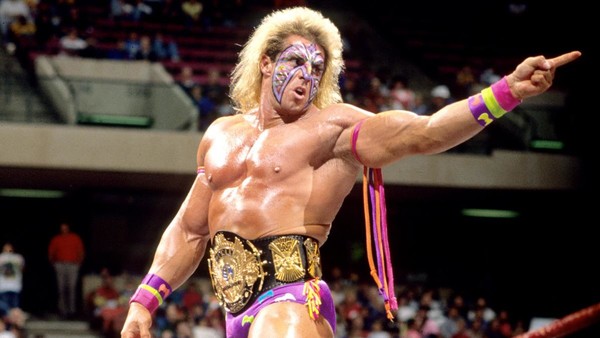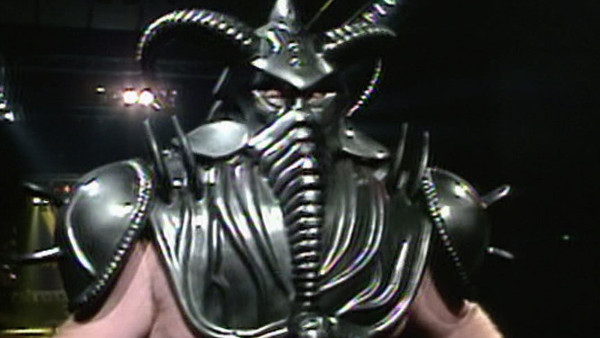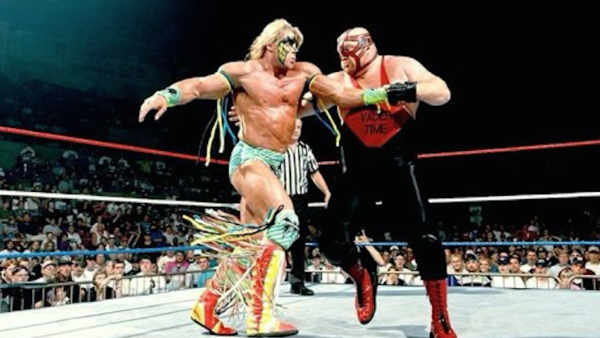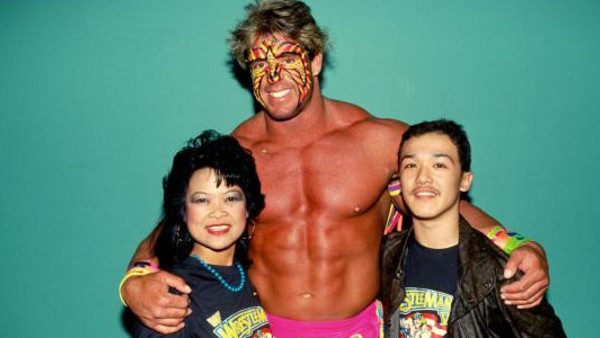The Ultimate Warrior: Incredible Secrets & Facts About His Career
4. Ultimate Warrior Nearly Had A Completely Different Career In Japan

The Ultimate Warrior only had two matches in Japan. However, he nearly had an entire career.
In 1987, New Japan Pro Wrestling wanted to create a fresh foreign star. They had the name (Big Van Vader) but they needed a body to play it. Then even lined up a famous manager - Takeshi Kitano (a.k.a. Beat Takeshi - famous as the host of Takeshi's Castle, which decades later was later re-edited into mXc - Most Extreme Elimination Challenge on Spike). The Vader character was destined to be a huge star with custom mask, massive special effects and a plan to rocket him to the top by beating NJPW's top star, Antonio Inoki, in a quick match.
Jim "Dingo Warrior" Hellwig seemed perfect for the job.

But it didn't go that way. Instead, Hellwig joined the World Wrestling Federation. Hellwig started wrestling for Vince McMahon in July 1987 and it quickly became clear he was going to be a hit with WWF audiences, as The Dingo Warrior became the Ultimate Warrior. Hellwig signed his first WWF contract on 23 September 1987 and spent the next four years relentlessly touring for the WWF.
In 1987, New Japan Pro Wrestling, the second largest promotion on Earth, was forced to go on to their second choice for the Big Van Vader character - AWA's Leon White. In the end, this outcome was probably best for both parties. Warrior ended up a big star in America and White (as Vader) ended up a big star in Japan. (Ironically, when Warrior had his final run in WWF, his last match was a count-out victory over Vader on 25 June 1996.)

Eventually, Ultimate Warrior did wrestle in Japan - but only twice. The first time, Warrior appeared on 13 April 1990 as part of an All-Star Wrestling Summit featuring matches from WWF, New Japan Pro Wrestling and All Japan Pro Wrestling. The once-in-a-lifetime show drew almost 44,000 to the Tokyo Dome, coming less than two weeks after Warrior had defeated Hulk Hogan at Wrestlemania VI to be crowned the new WWF Champion.
This title change led to a lot of tension as All Japan co-founder Giant Baba was quite upset that Vince McMahon hadn't informed him in advance that Hulk Hogan wouldn't be holding the strap anymore. The arranged "title defense" against Terry Gordy fell apart and in the end Hulk Hogan defeated Stan Hansen in the main event, while WWF Champion The Ultimate Warrior beat Ted DiBiase using a flying clothesline and splash in a quick six minute match. Japanese fans were not kind and treated Warrior's match like a comedy spectacle instead of a serious world championship bout.
In 1991, the WWF/WCW rivalry was played out overseas as both companies supplied talent for rival Tokyo Dome shows held just nine days apart. WWF had established a working relationship with Tenryu's Super World of Sports (SWS) and promoted Hulk Hogan & Genichiro Tenryu vs. The Road Warriors (Legion of Doom). Meanwhile, New Japan and WCW booked a "Starrcade in Tokyo Dome" show headlined by Ric Flair vs Tatsumi Fujinami.
The NJPW/WCW show drew a record gate with an announced 64,500 fans (the building legitimately had at least fifty-four thousand fans there), whilst the WWF/SWS only drew about 35,000 fans (which was comically exaggerated to 64,618 for publicity). Held just one week after Wrestlemania VII, Ultimate Warrior pinned the newly uncrowned Sgt. Slaughter in another six-minute special with his trademark clothesline and splash.

Despite his limited working ability and extreme lack of presence in Japan, Ultimate Warrior was still quite popular in Japan. Gong Magazine Weekly, a popular Japanese pro-wrestling publication rated Ultimate Warrior as #8 among the top twenty Gaijin (foreign) wrestlers based on fan popularity balloting. It's a surprising feat considering how limited his exposure was in the country compared with the stronger presences in major Japanese companies of the other wrestlers: Warrior was ranked only behind Stan Hansen, Dynamite Kid, Scott Norton, Sting, Vader and Terry Gordy, but surprisingly beat out names including The Road Warriors, The Steiners, and Steve Williams.